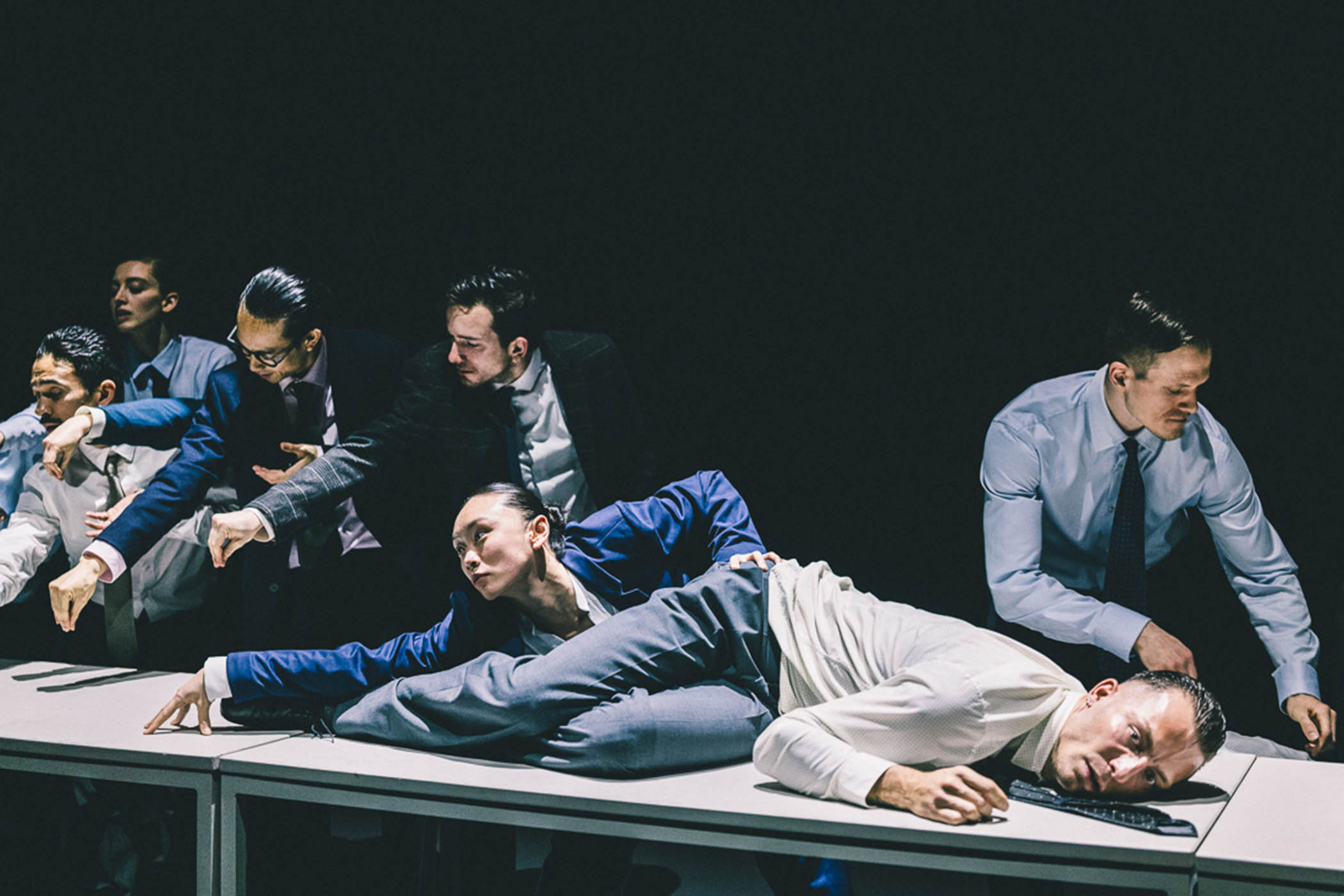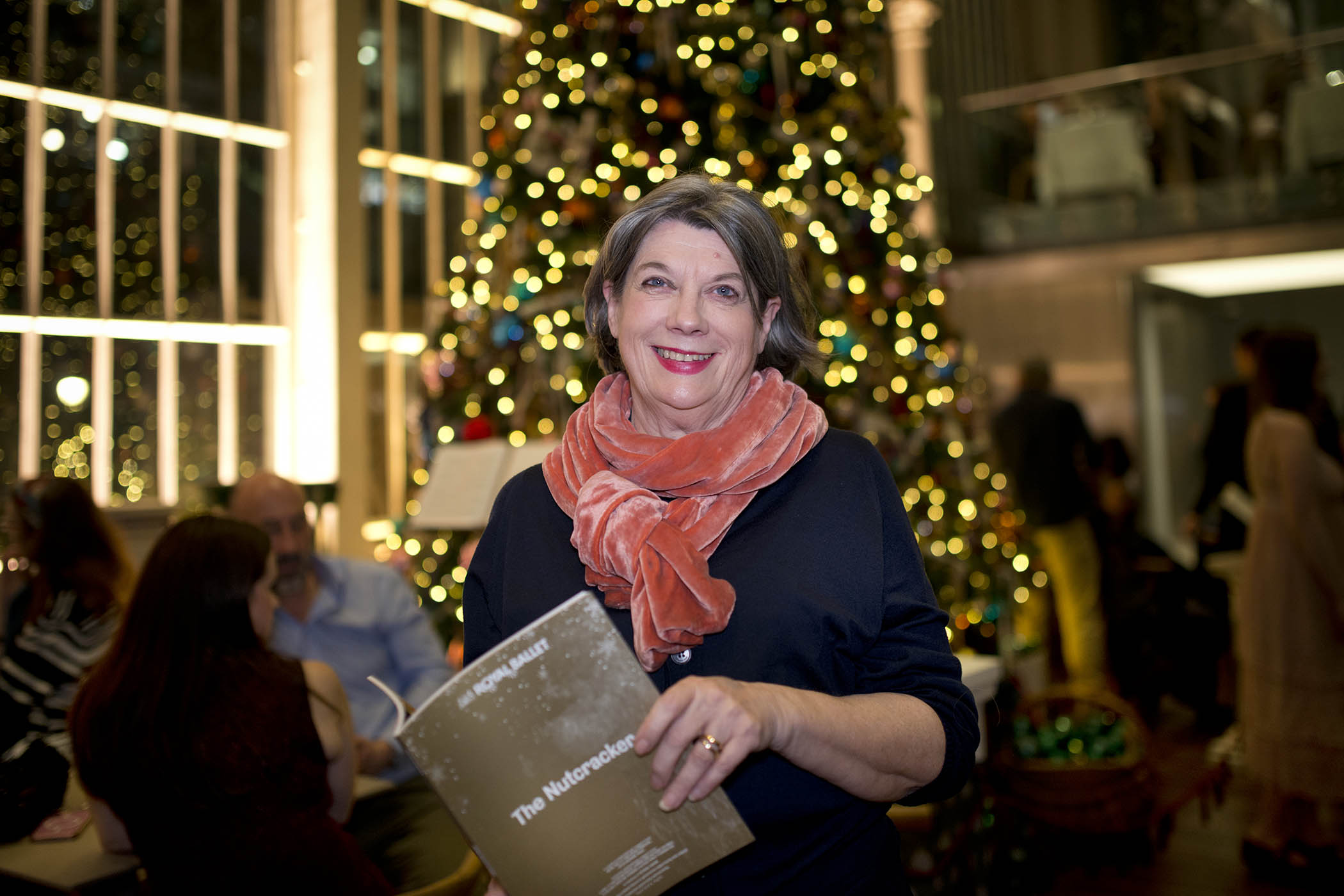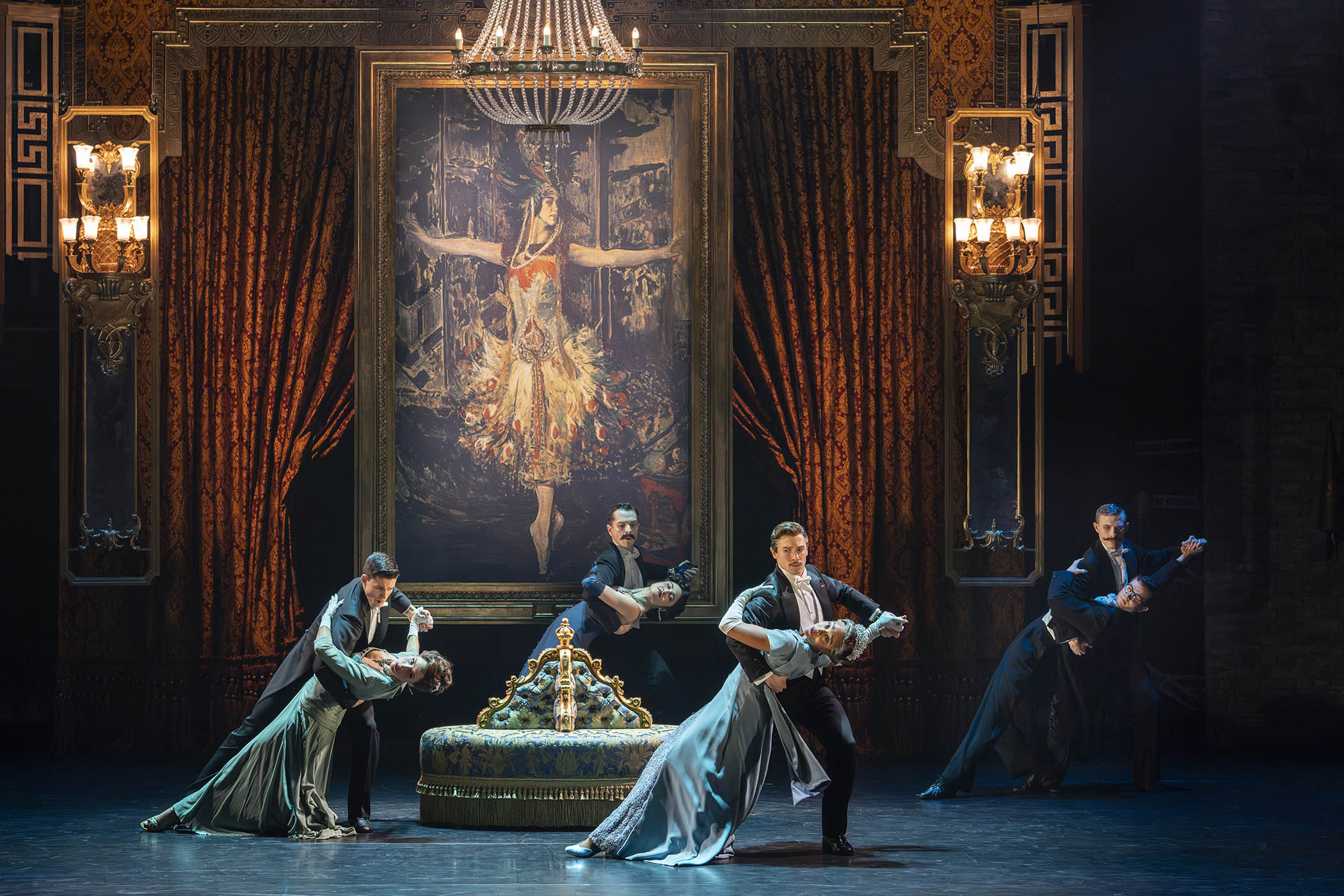The choreographer Crystal Pite has always pursued her belief that dance can tug something out of the heart of its audience that generates imaginative empathy. The theatre-maker Simon McBurney has long believed that theatre is transformative. In Figures in Extinction, a co-production between Nederlands Dans Theater and Complicité, the two artists have created something extraordinary, a masterwork tackling the biggest political and philosophical issues of the day through words and movement. It brings together intellect and emotion, juggling complex concepts while breaking your heart.
Each of its three parts opens with the superb dancers lined up on stage; each poses a separate question. The first, [1.0] the list, is a compendium of the climate crisis, a danced inventory of 12 animals, plants and places representative of more than a million species under threat. The movement is specific without being imitative: white waving arms become the smooth handfish; sluggish, ambling bodies a herd of caribou. Each specimen flickers in glory, lit by Tom Visser in a melancholy glow. Each reveals a flash of agony as the voiceover outlines the peril facing the natural world, fading to extinction in front of our eyes.
It brings together intellect and emotion, juggling complex concepts while breaking your heart
[2.0] but then you come to the humans suggests why this separation between humanity and habitat has happened, taking the form of a lecture on brain science. As man becomes the wounded creature being studied, trapped by an over-reliance on the mechanical, servant side of the brain, he writhes under the lights like a tortured frog.
Pite’s choreography is precise, each inflection of hand, neck and head elegantly synchronised. Each point in the voiceover finds a concrete image, dancers scattering fiercely when the lecturer talks of the separation of the brain, launching into a brief burst of finely tuned ballet when he talks of creativity.
The final part, [3.0] requiem, asks the biggest questions of all about space and time, the gulf between the living and dead. It turns the shadowy figures who have circled the stage at moments in the first two sections into shades that lean in to watch families gathered around a death bed, their breath heavy and ragged.
The soundtrack, superb throughout in its blend of speech and musical fragments, features both the Fauré and Mozart requiems. The mood is dark and mysterious, punctured at one audacious moment by a snatch of lively rap. The steps are stretched, elongated, circling into solos and duets that are full of inchoate sensation, as the lighting magics falling shapes of brightness out of the gloom.
The astonishing quality of the work is the way it embraces dance’s abstraction, while underpinning it with thought-provoking words. It allows ideas and feelings to bubble through its images, suggesting something beyond itself, even as it makes its plea for change and understanding. It is both beautiful and impassioned – a unique work of art.
Photographs by Rahi Rezvan



